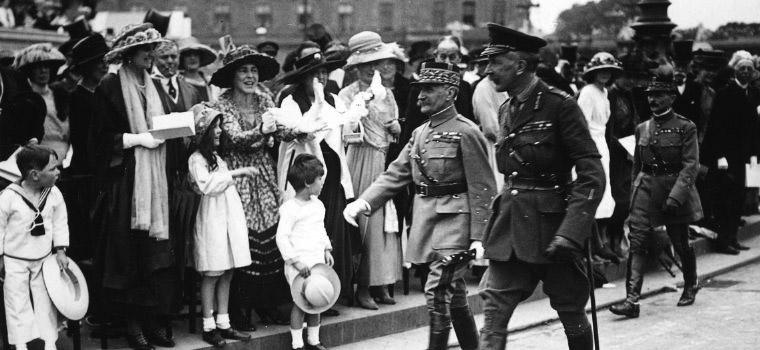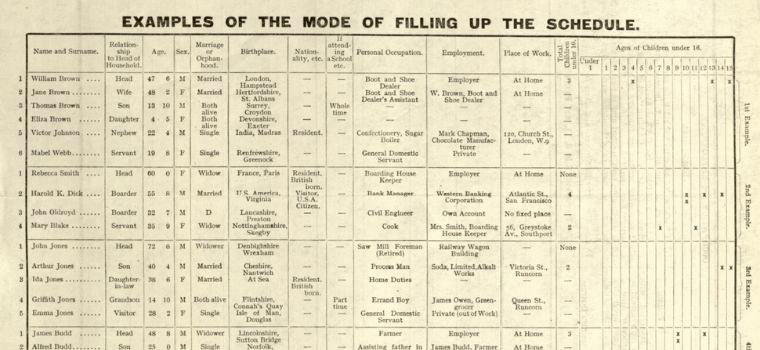Censuses are a remarkable public record and a treasure trove for historians, giving a detailed snapshot of the country and its population in one single moment – in this case, the night of 19 June 1921.
The 1921 Census contains the records of nearly 38 million individuals and 8.5 million households. It has been housed on 1.6 kilometres of shelving – and more than 20 million colour images have been taken in the process of digitisation.
Everyone can now view the census online at Findmypast.co.uk, who have spent three years digitising this precious resource.
But what makes the 1921 Census particularly interesting?
A moment in time
In 1921, the country was adjusting to peacetime and the lasting impact of the First World War and influenza pandemic. The 1921 Census report that gives us an overview of the country at this time shows the devastating losses of those who died in the war and pandemic, but also the dramatic reduction in the birth rate – the number of two-, three- and four-year-olds recorded at this time is significantly lower than the number of five-, six-, seven- and eight-year-olds.
The personal information in the census returns shows the impact of the war on every family. Who were people living with? Where were they working? How were relationships affected? Were husbands and wives still together? Were mothers and children, brothers, sisters and friends living nearby or apart? Had children been orphaned?
In the aftermath of both a global conflict and the influenza pandemic, this was all key information for the government to record.

Capturing more information than previous censuses
The 1921 Census provides greater detail than any of the previous censuses, asking additional questions about marital status, employment and education.
- Divorce: The 1921 Census is the first census to list ‘divorced’ as an option for marital status; divorce rates had risen dramatically during and immediately after the First World War.
- Occupation and employment: Compared with previous censuses, the questions about employment in the 1921 Census were more detailed. People were asked to state their ‘Profession, Trade, or Service’ (the equivalent of their modern day ’job title’ as before), but also to give the name of their employer and details of their place of work.
This means that for the first time a census showed who people worked with. This gives a brilliant insight into the role that employers played in their communities on both a local and national scale, as well as providing a more detailed picture of different occupation types.
- Children: Unlike earlier censuses, the 1921 Census asked for the exact age of children (in both years and months). And following the introduction of the 1918 Education Act, it also asked for the educational status of children aged 15 and younger for the first time.
Last release for 30 years
Censuses are taken every 10 years. The census records will then remain closed for 100 years before they are opened to the public.
The 1921 is Census is particularly important, as it will be the last census publication for some years to come – the 1931 Census of England and Wales was destroyed in a fire at the Office of Works in 1942, the 1941 Census was never taken due to the outbreak of the Second World War, and the 1951 Census is not due to be released until 2052.

